
I recently went kayaking with Doug Graham of Graham Canoe
Outfitters located near Valentine, Nebraska. He took us to the
Niobrara River which begins in Wyoming and travels 535 miles
until it flows in the Missouri River in northeast Nebraska.
Seventy six miles of the river is named a National Scenic River.
We put in at Cornell Bridge in Ft. Niobrara National Wildlife
Refuge and paddled for three hours to Smith Falls State Park.
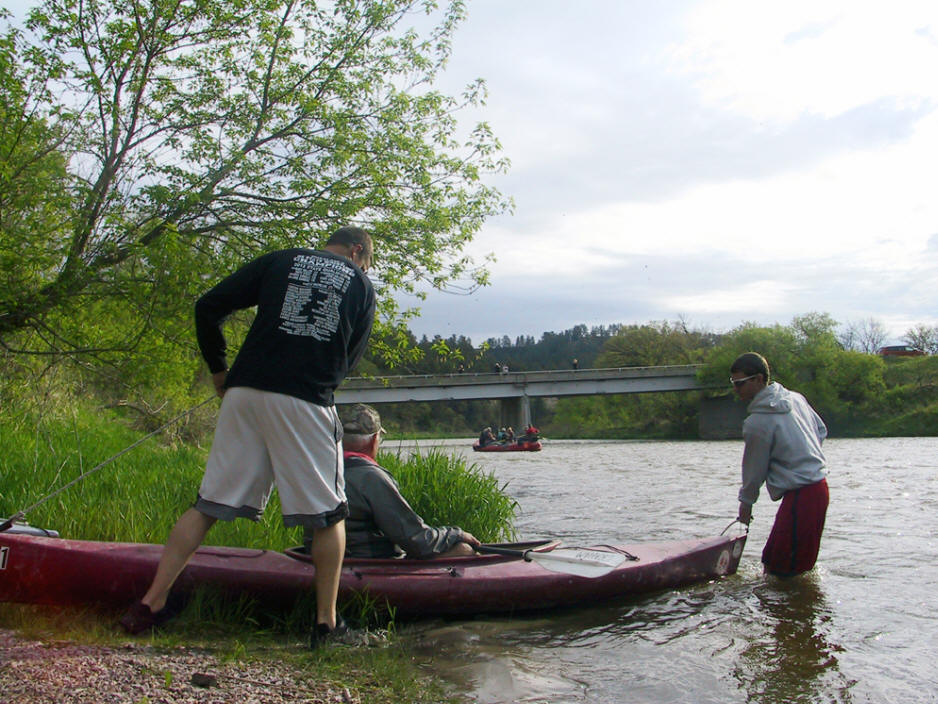 |
| Putting in for our kayak trip |
The trip took us through several different ecosystems and the
cliffs along the banks told a geological story of the river's
birth. On both sides, the sandstone banks showed the layers of
time where the river had cut a valley 200 to 300 feet deep into
the earth and between one-half to two miles wide. The bedrock
beneath the river bottom is a hard pinkish gray ranging to brown
sandstone called the Rosebud Formation. Multiple waterfalls,
some tiny ones create a trickle into the stream: others like
Smith Falls pour vast amounts of water into the river.
 |
| A pair of Canada geese on the
river |
The sandhills through which the river passes are an interesting
geological feature. This area was once a vast inland sea. The
sandhills are remnants of dunes that have become stabilized over
the centuries by the prairie grasses.
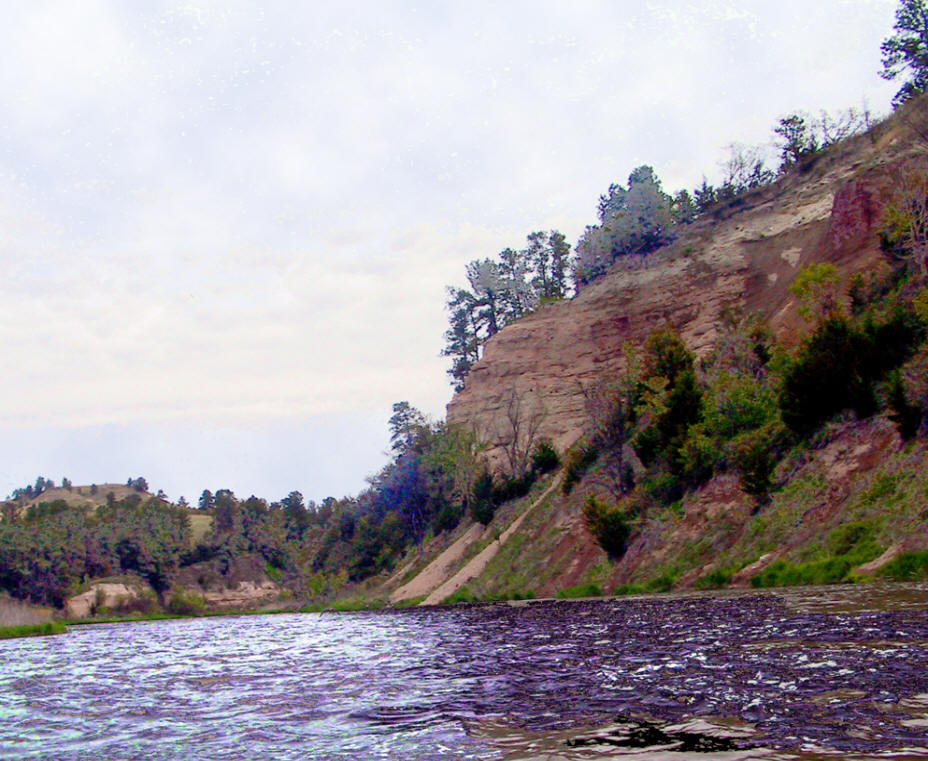 |
| Those cliffs are impressive |
Once buffalo and elk grazed these plains. Today the Wildlife
Refuge is home to about 160 plant and animal species including
birds such as indigo and
lazuli buntings, yellow-shafted and red-shafted flickers, and
Baltimore and Bullock's orioles, Mammals such as white-tailed
deer, raccoons, coyotes, squirrels, eastern cottontail rabbits,
mink, beaver and river otter are seen often. Occasionally a
moose might be spotted. We saw quite a few birds but I was not
able to identify any other than the Canada goose.
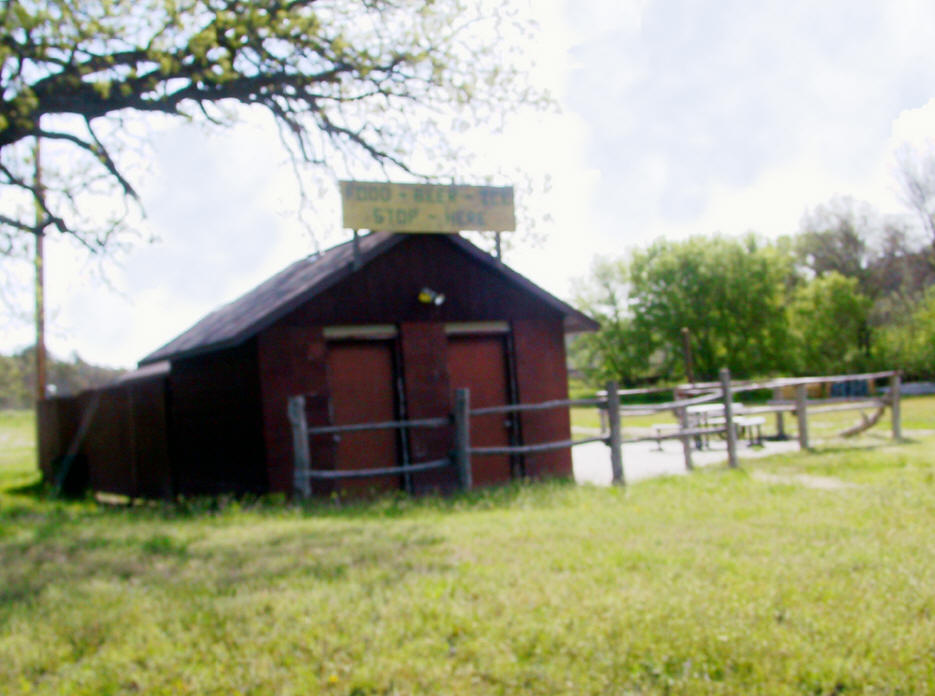 |
| Berry Bridge Landing is a
welcome stop on the river |
We took a brief rest stop at Berry Bridge. This is a great place
to break. There are rest rooms, tables and water. There is a
small shack that sells snacks, soft drinks and beer but it
wasn't open when we stopped.
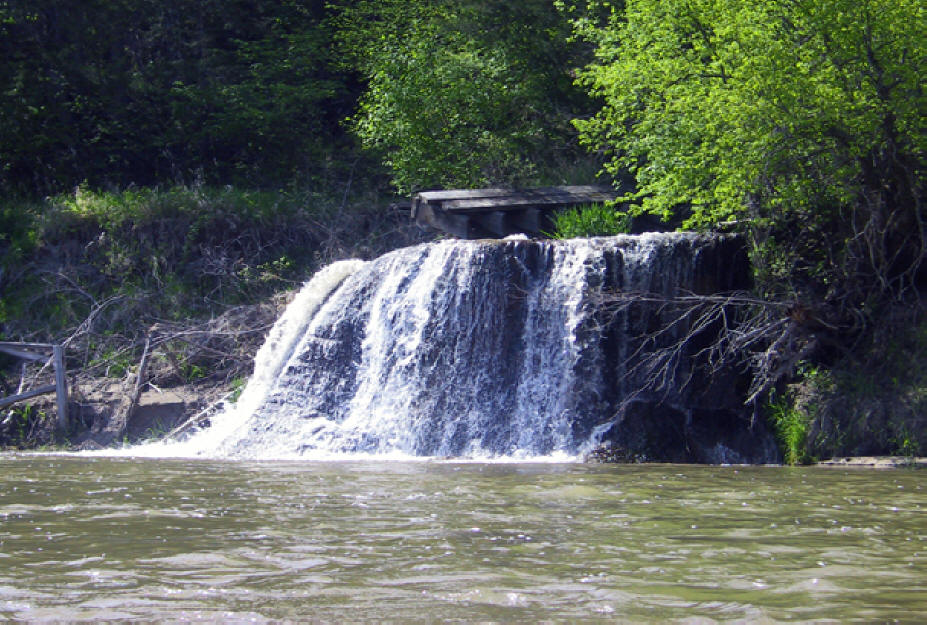 |
| One of the falls along the river |
Smith Falls Park is another great stopping spot. This was our
take out spot where
we found tables a shelter, a great fire circle and restrooms.
Doug's wife, Twyla, and some other ladies from Graham Canoe
Outfitters met us there and provided refreshments. What a treat.
What's the most unlikely scenario for
river fun? How about hopping into a cattle feeding tank and
floating down a river. Well, it's not just wild imagining. We
did just that on Middle Loup River with Mitch Glidden of
Sandhills Motel and Canoe rental.
 |
| Tanking is
a whole different sport |
Tanking is a relatively new sport that
seems to be practiced almost solely in Nebraska so far. Instead
of floating down a stream in a kayak, canoe, raft or even a
tube, I found myself in a round feeding stock tank with about a
seven foot diameter made of heavy gauge plastic and fitted with
seats around the rim. Some are as large as nine feet. They seat
up to eight people and are practically unsinkable. They are also
unsteerable. We were equipped with oars that could be used to
keep from getting caught up in patches of grass or tree limbs in
the water. When we drifted into the banks. We could push off
with the oar and the current would once again carry us towards
our destination.
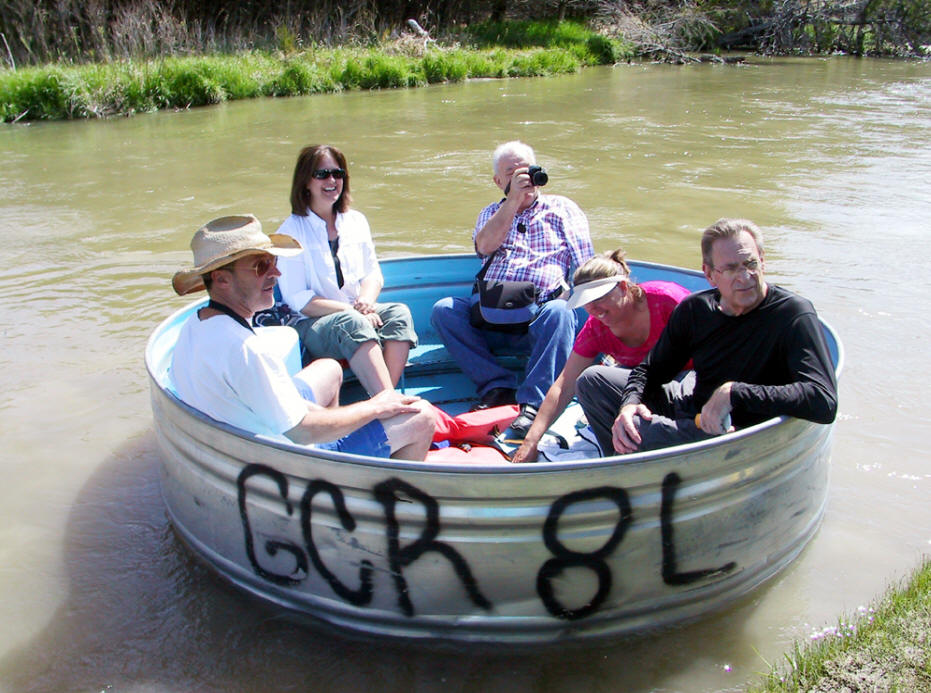 |
| Some of my companions relaxing
as they float down river |
Luckily Mitch accompanied us and gave us a running commentary
not only on the sport of tanking but the natural environment of
the Middle Loup river. Middle Loup River flows just north of
Mullen. It's part of a series of rivers along with North Loup
and South Loup that eventually flow into the Platte. Middle Loup
curves through sloping canyons
in the Sandhills and
is spring-fed with relatively calm waters. It has enough twists
and turns to make it interesting. You always wonder what's
around the next bend. We spotted a few cattle and some horses on
the trip.
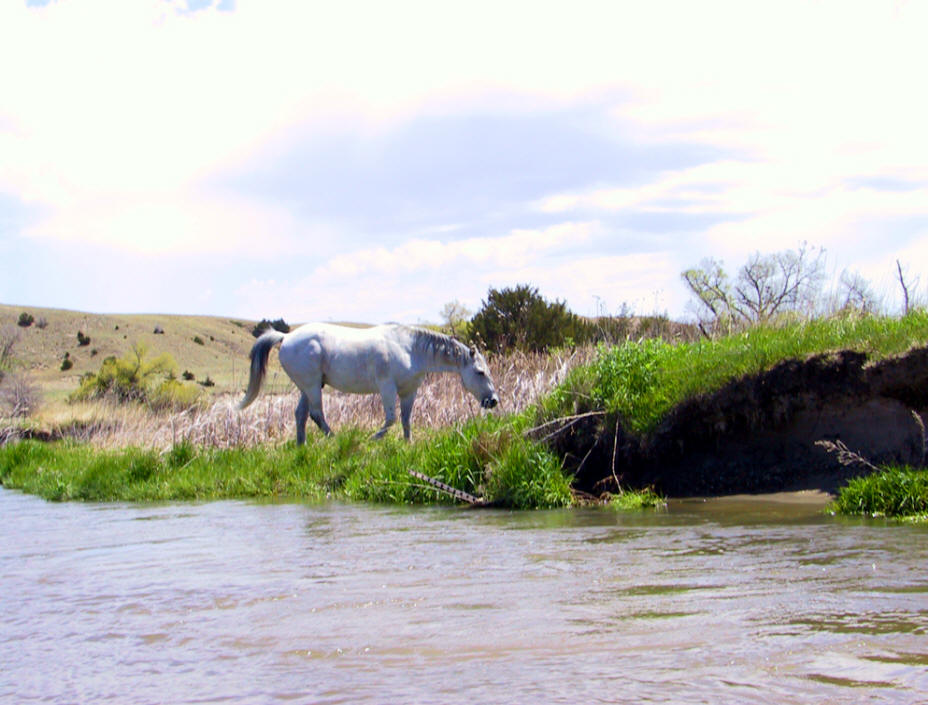 |
| That horse didn't pay us any
attention but we were sure watching him |
The thing that makes tanking different is the stability of the
tank. It is almost impossible to turn over. We were able to all
enjoy a leisurely lunch as the river carried us along with
little or no help
from us. It's a wonderful way to enjoy a relaxing day on the
water.
For
more info:
http://www.grahamoutfitters.com/home
http://www.sandhillsmotel.com/river-adventures/middle-loup-river-trips/
|